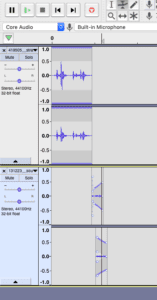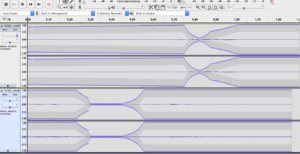http://imanas.shanghai.nyu.edu/~hkg245/audioproject/
Description
Our sound project is displayed as a 1945 newspaper, in which sounds corresponding to words in the articles are played when moused over. The idea is the make the intensity and horror of violent events (in this case a US attack on Japan in WWII) more striking. Meanwhile, the article on the attack is neighbored by a fashion article. Despite there being grave events happening around the world, the consumers attention is too often drawn to mundane media. The sounds that emerge from mousing over one side of the newspaper (war, violence) to the other (comfortable, every-day sounds) is meant to create a striking contrast. At first we also wanted to make words appear in bold when moused over, so that the user would see which words they were listening to, but then we felt that the experience of the project is more realistic with ambiguity so that the user feels they are listening to the articles rather than listening to individual words.
Process
Both of the articles in our newspaper were real articles published in the 40s, as were the photos. We created the format of the newspaper with the help of a template and spent most of the time selecting and editing sound files and inserting them in the proper text. We tried several methods of making sound play when mousing over the word, which included trying to make words buttons, trying to make words belong to one “soundword” class. In the end it worked best to use:
<a style=”text-decoration:none” onmouseenter=”playAudio21()”>dormitory corridors</a>
in HTML and load the audio above the <body>.
In script.js we defined each playAudio() function as the following.

 .
. 

For sound files I used snippets from various freesound tracks such as apples being cut, washing machines, cloth being rustled, ball games, and people talking in halls. I then used audacity to cut out just the sound we wanted to use and then combine and adjust or taper volumes. For example the sound played when mousing over “apple” (describing the apple print outfit) is a combination of apples being cut and cloth being moved. Other sounds, like the washing machine, were trimmed to makes each the spin-pause sequence shorter and the machine quieter. Some sounds are longer than others so that they are sustained after the user mouses over and blend with new audio the user encounters. Other sounds are short and end briefly after being moused over. This is meant to give a multifaceted experience of the articles.
Another interesting effect we found file making this project is when the user mouses from the war article to the fashion articles and the sounds crossover. As a resulted the sustained sounds of war have to compete for attention with small everyday sounds of a comfortable college life, like laundry and hallways.